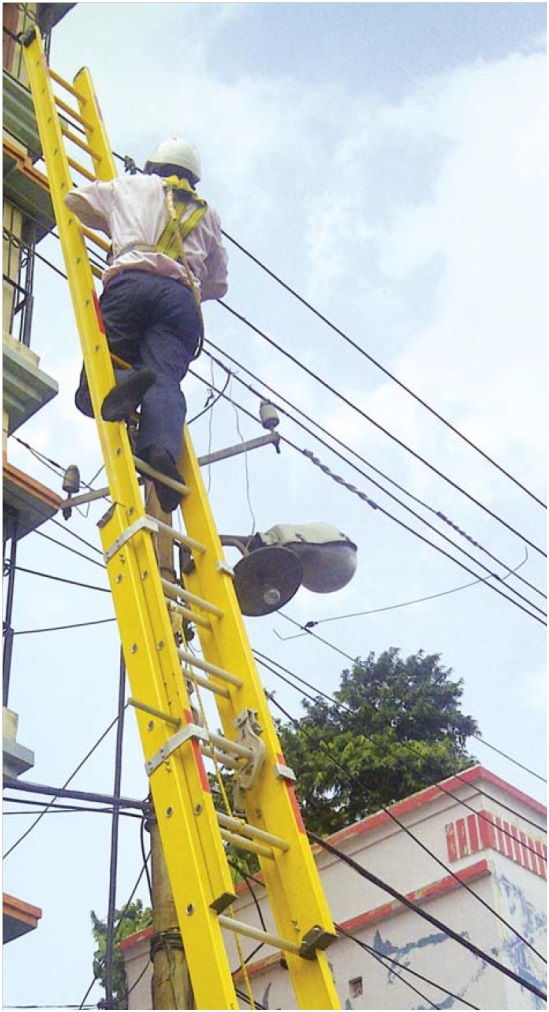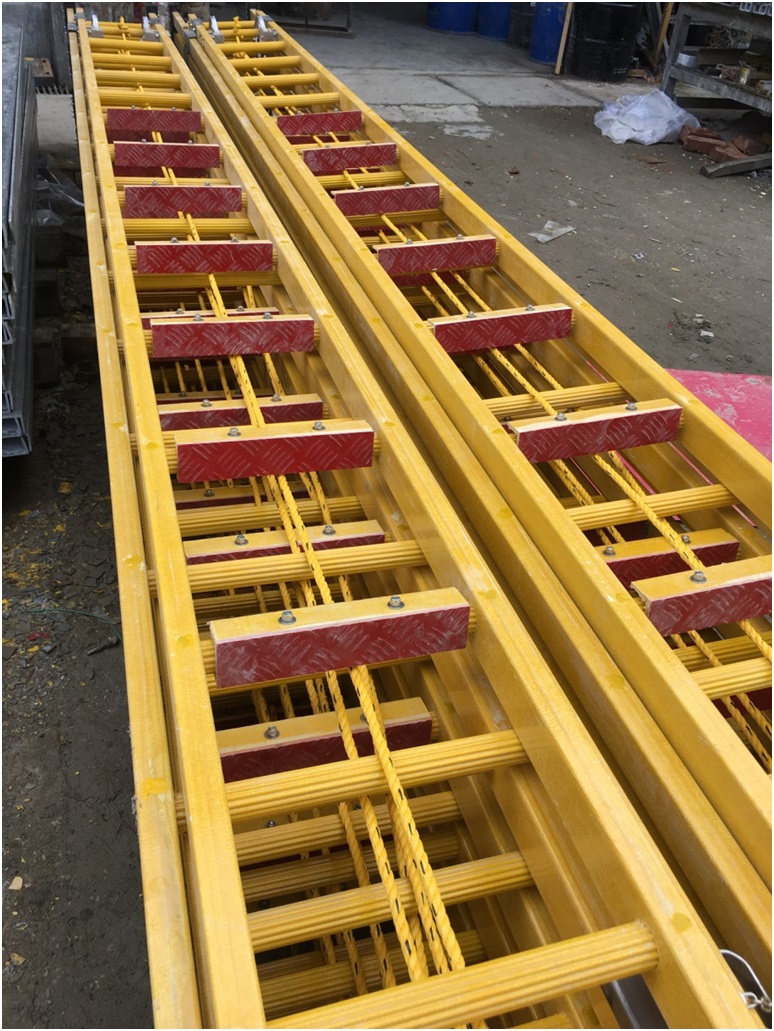ARC FRP Ladder in Power Generation Facilities
Benefits of using ARC’s FRP Ladder in Power Generation Facilities
- Non-conductive: FRP ladders are excellent electrical insulators, making them suitable for use in environments where electrical safety is a concern, such as in power plants, substations, and industrial facilities.
- Non-sparking: FRP ladders are non-sparking, which makes them safer for use in potentially explosive environments or areas with flammable materials.
- Corrosion resistance: FRP ladders are highly resistant to corrosion caused by various environmental factors, such as moisture, chemicals, and atmospheric pollutants. This resistance ensures a longer service life and reduces maintenance costs compared to traditional metallic ladders, which are susceptible to corrosion.
- Lightweight and high strength: FRP ladders are lightweight yet possess excellent strength-to-weight ratios, making them easier to handle and install compared to metallic ladders of similar strength. This characteristic also reduces the load on supporting structures.
- Low maintenance: FRP ladders are resistant to fouling, scaling, and buildup, which can reduce the need for frequent cleaning and maintenance, resulting in lower operational costs.
- Versatility: FRP ladders can be manufactured in various sizes, lengths, and configurations to meet specific application requirements, such as fixed ladders, step ladders, or mobile access platforms.
- Durability: FRP ladders are resistant to environmental factors such as UV radiation, temperature fluctuations, and moisture, ensuring long-lasting performance in both indoor and outdoor installations.
- Easy installation: FRP ladders are generally lighter and easier to handle than metallic ladders, facilitating easier installation and reducing labor costs.
- Customization: FRP ladders can be tailored to specific applications by incorporating various additives or coatings to enhance their properties, such as increased slip resistance.



